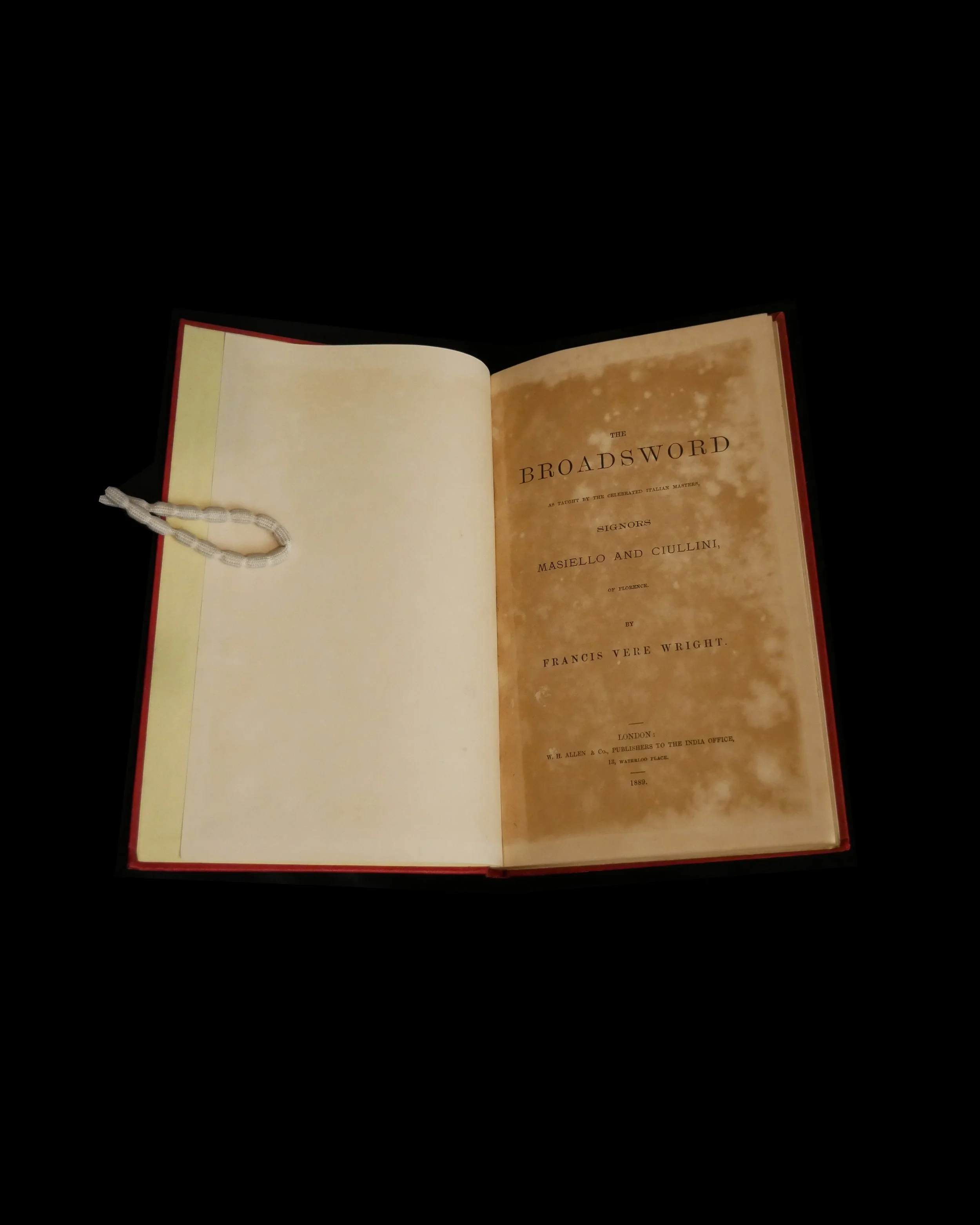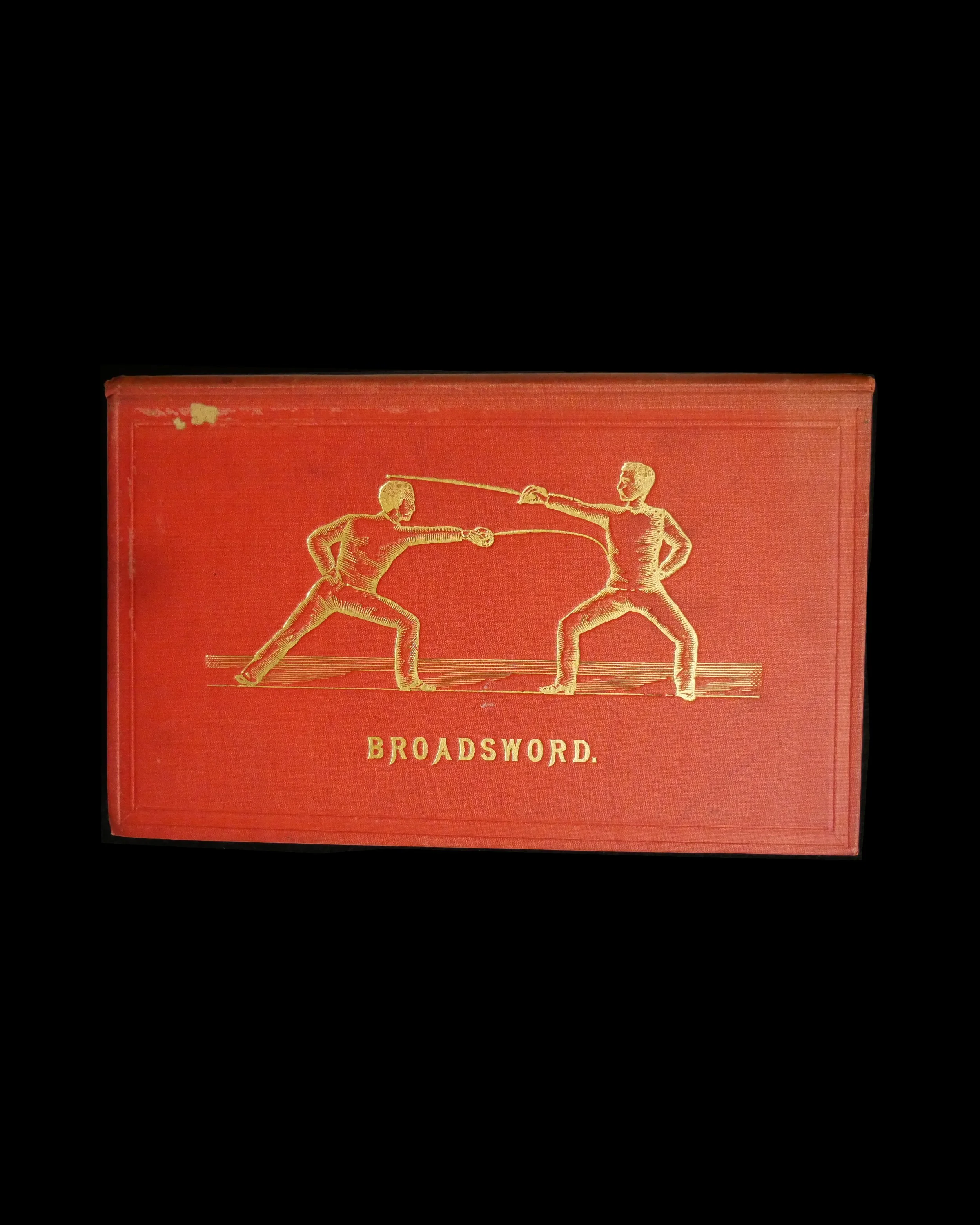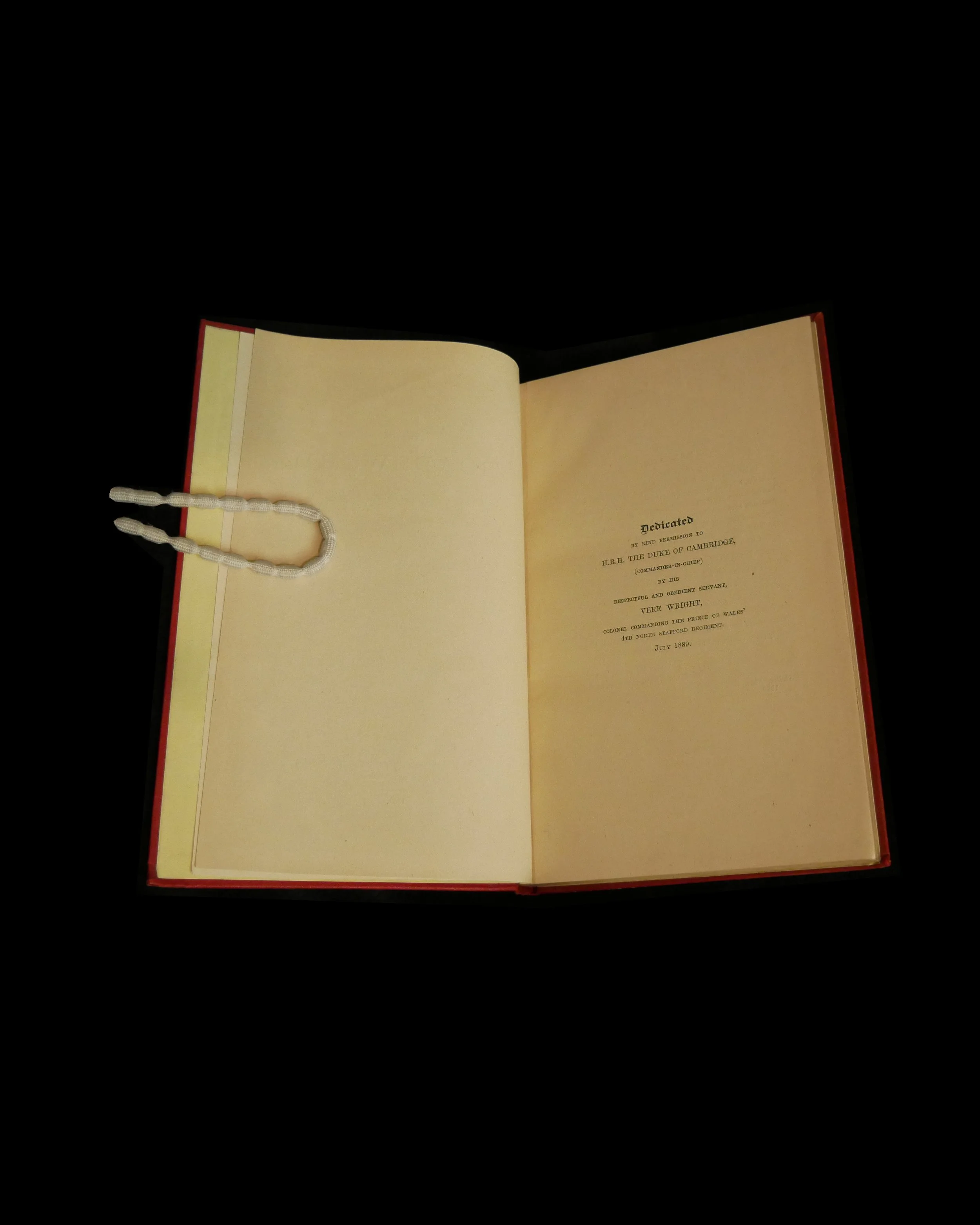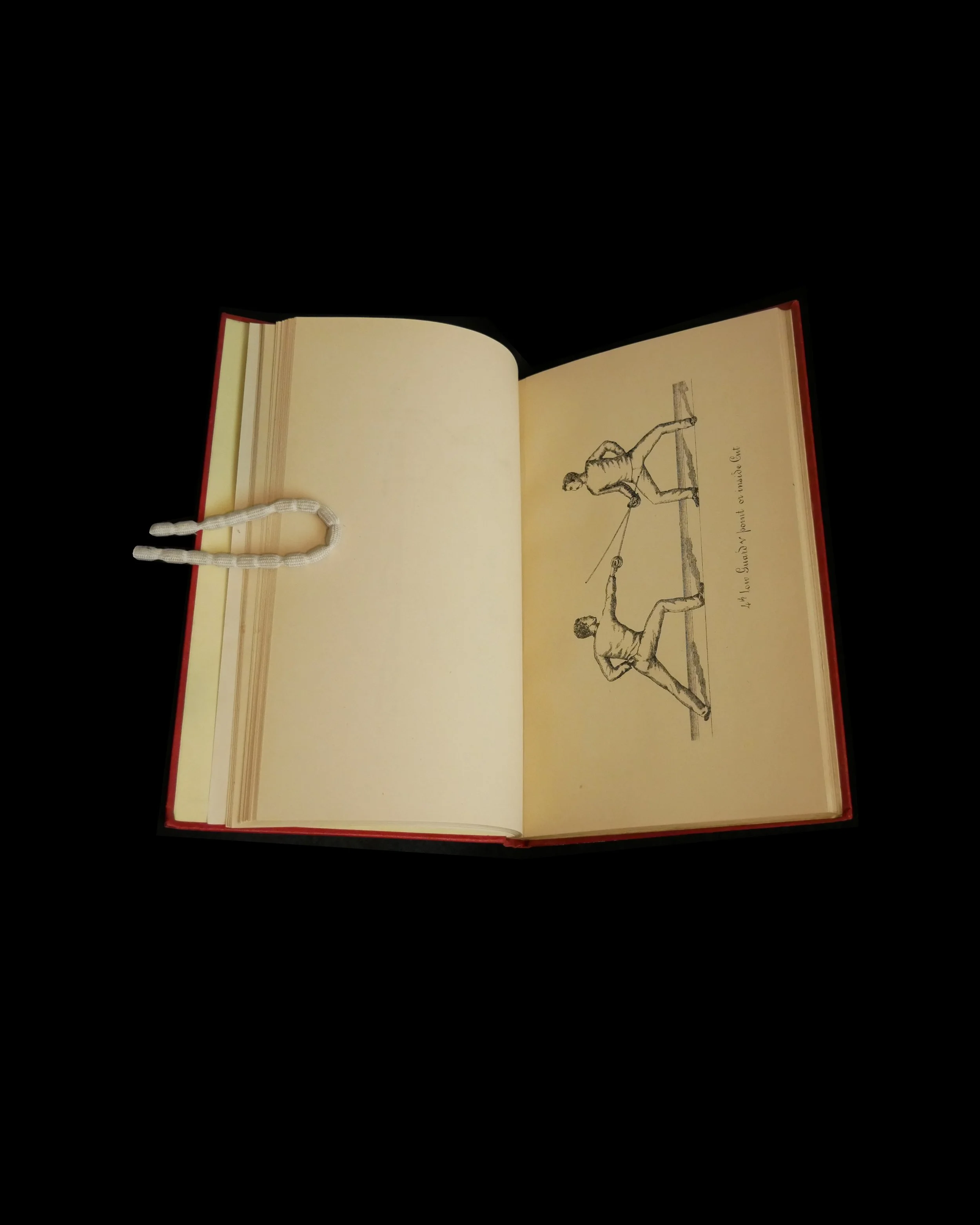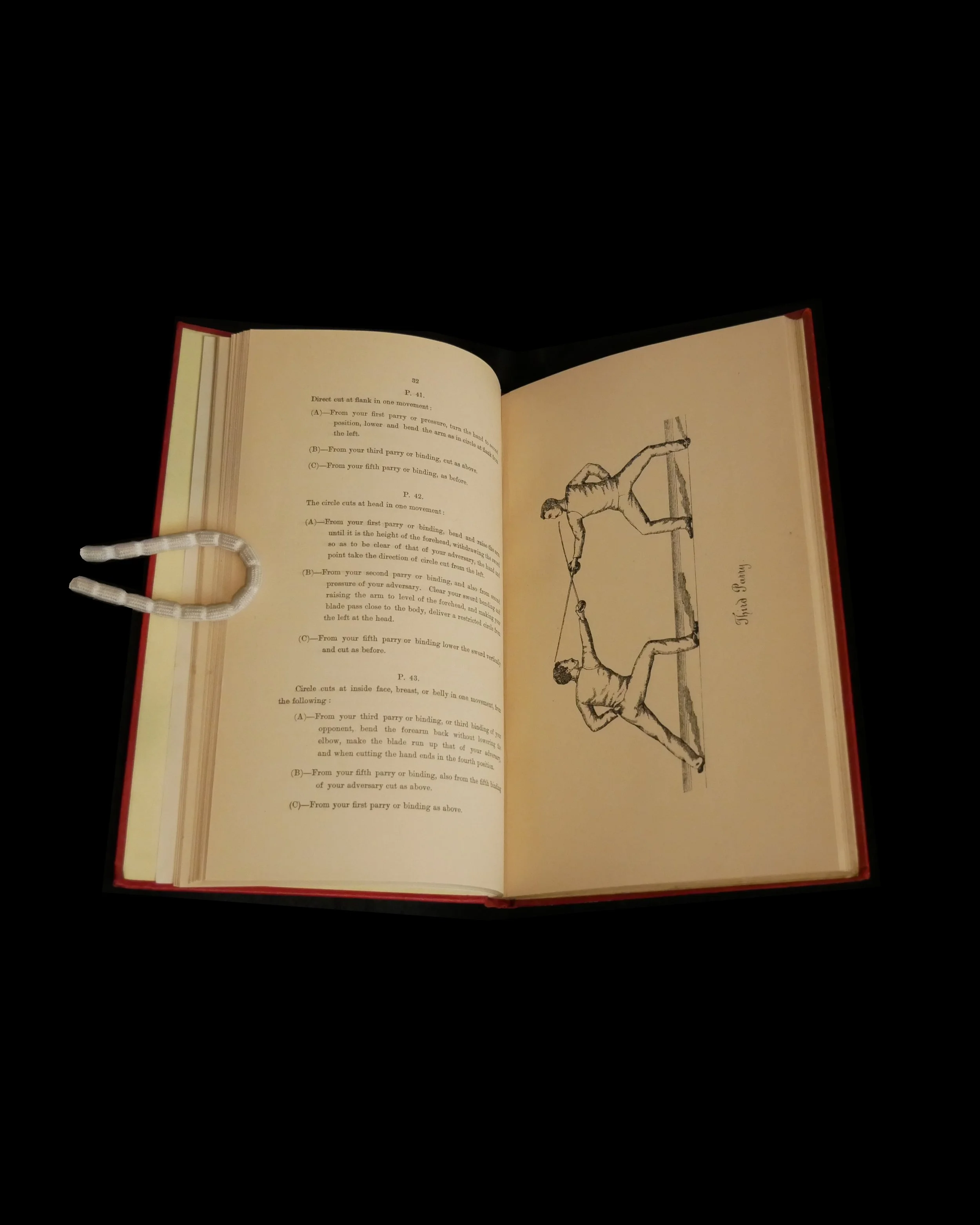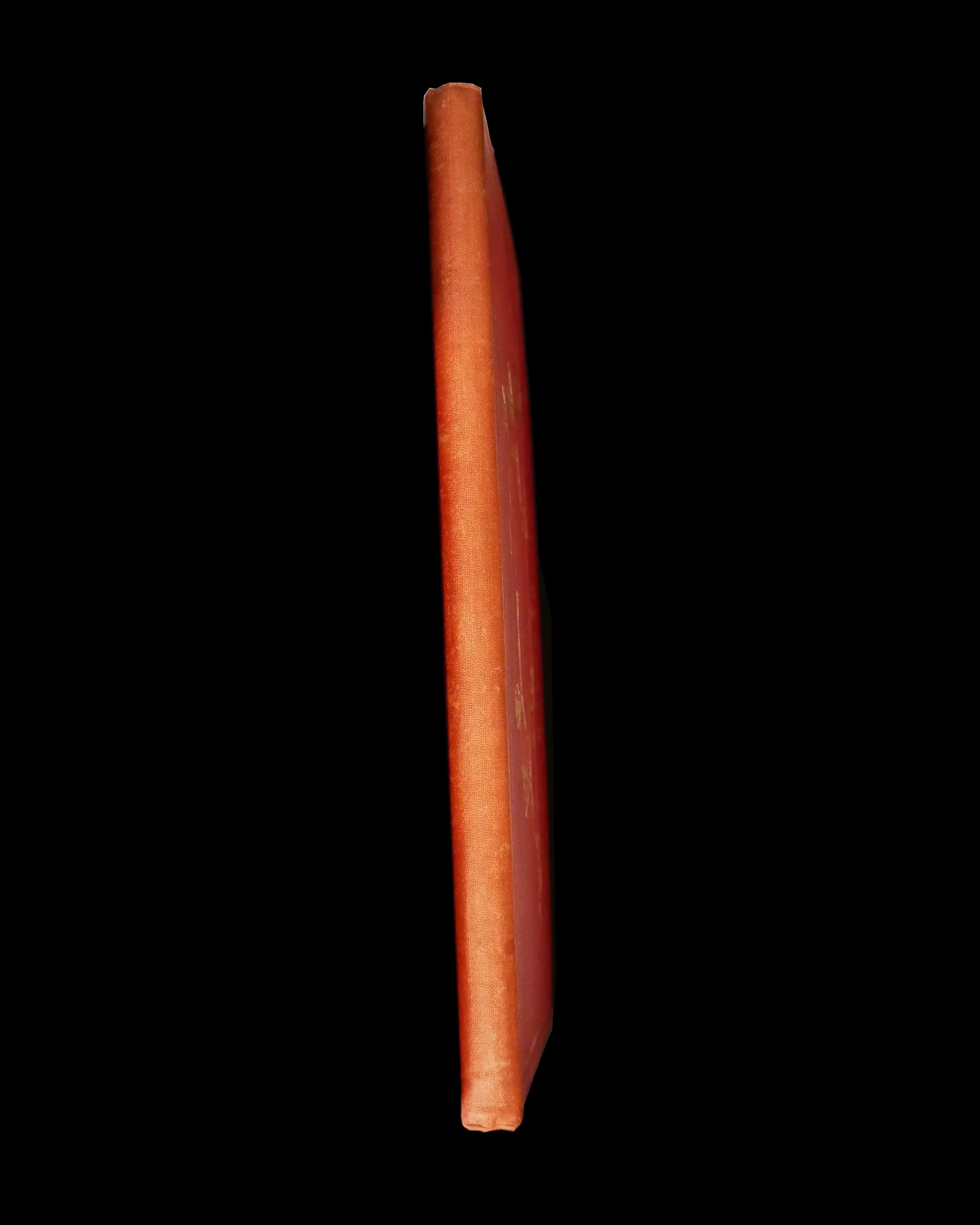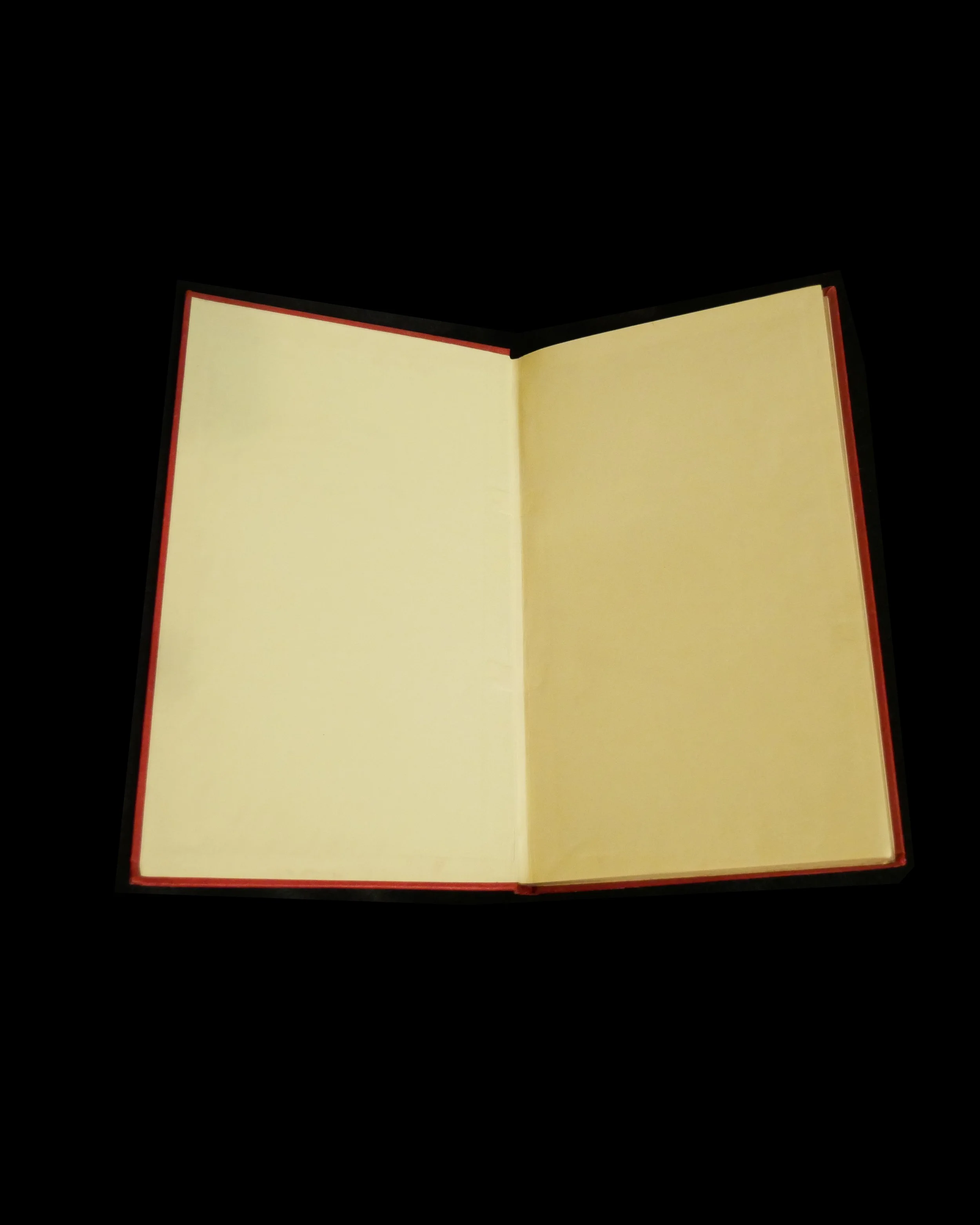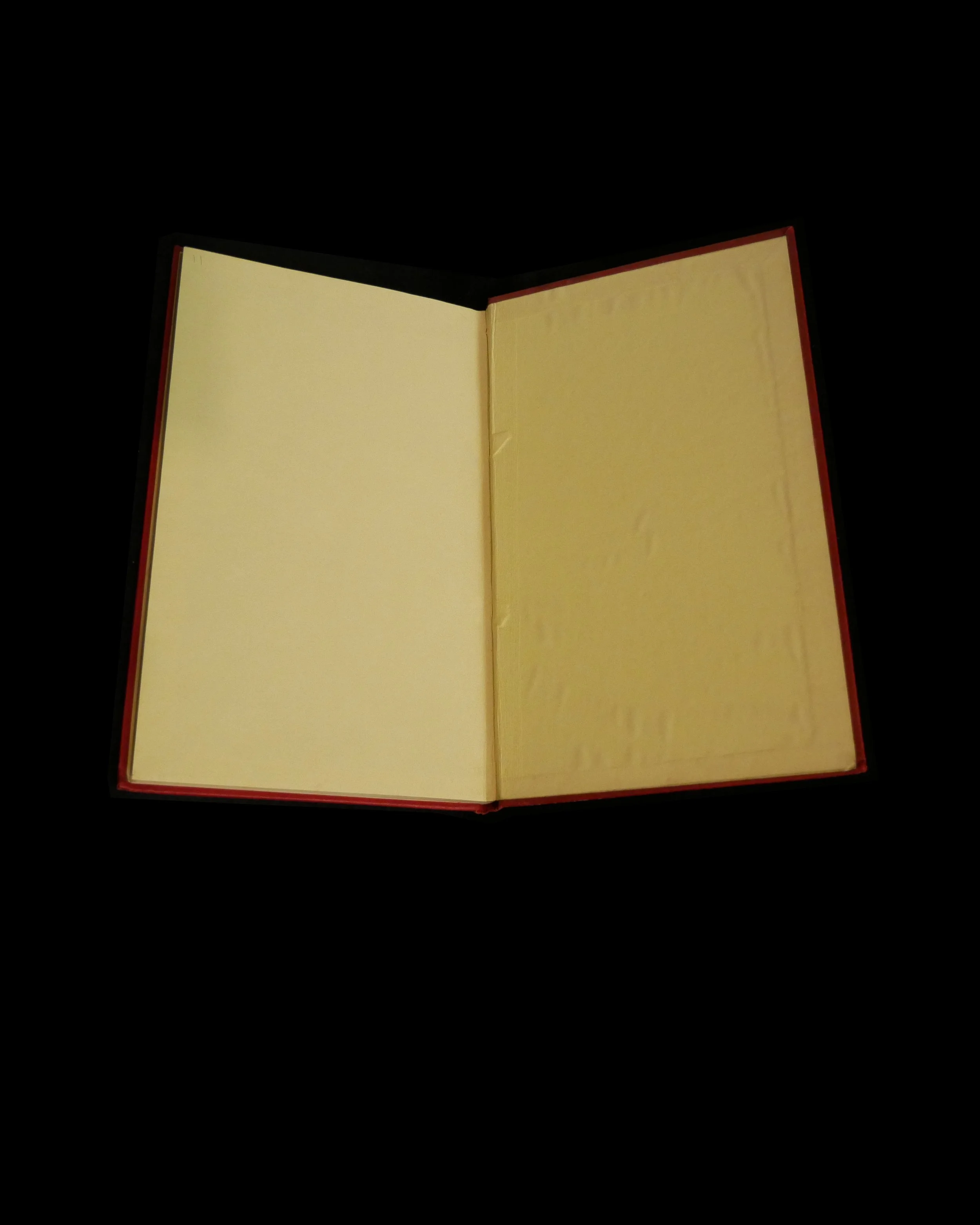The Broadsword Francis Vere Wright
The Broadsword: As Taught By The Celebrated Italian Masters, Signors Masiello And Ciullini Of Florentine (1889) By Francis Vere Wright
Blind tooled red buckram binding with gold embossed figures. Small loss to front cover and sun damage on the spine. Rebinding tight binding but still usable. Title page and last page show acidification, main text block is in very good condition with no staining, foxing, or tears.
In 1892, at the invitation of the British government, Masaniello Parise and a delegation of four fencing instructors from the military fencing master's school in Rome were sent to England in order to give demonstrations at London's annual military tournament. Reflecting the growing interest in England around Italian sabre fencing techniques of Master Giuseppe Radaelli. Culminating with Francis Vere Wright's 1889 partial translation of Masiello's sabre treatise. Intended as an instructional manual that was to go hand-in-hand with a new, lighter, straight-bladed broadsword being developed for service.
In the book The student is led step-by-step through perfecting a half-dozen cuts, after which they are introduced to the related and appropriate guards, which in turn result in a third action … be it beat, cut, point or riposte. Most of the dozen guards and cuts do occur from the elbow instead of the previously favoured shoulder, and are aimed against the upper torso
Provenance:
From the collection of William Reid CBE, Director National Army museum
The Broadsword: As Taught By The Celebrated Italian Masters, Signors Masiello And Ciullini Of Florentine (1889) By Francis Vere Wright
Blind tooled red buckram binding with gold embossed figures. Small loss to front cover and sun damage on the spine. Rebinding tight binding but still usable. Title page and last page show acidification, main text block is in very good condition with no staining, foxing, or tears.
In 1892, at the invitation of the British government, Masaniello Parise and a delegation of four fencing instructors from the military fencing master's school in Rome were sent to England in order to give demonstrations at London's annual military tournament. Reflecting the growing interest in England around Italian sabre fencing techniques of Master Giuseppe Radaelli. Culminating with Francis Vere Wright's 1889 partial translation of Masiello's sabre treatise. Intended as an instructional manual that was to go hand-in-hand with a new, lighter, straight-bladed broadsword being developed for service.
In the book The student is led step-by-step through perfecting a half-dozen cuts, after which they are introduced to the related and appropriate guards, which in turn result in a third action … be it beat, cut, point or riposte. Most of the dozen guards and cuts do occur from the elbow instead of the previously favoured shoulder, and are aimed against the upper torso
Provenance:
From the collection of William Reid CBE, Director National Army museum
The Broadsword: As Taught By The Celebrated Italian Masters, Signors Masiello And Ciullini Of Florentine (1889) By Francis Vere Wright
Blind tooled red buckram binding with gold embossed figures. Small loss to front cover and sun damage on the spine. Rebinding tight binding but still usable. Title page and last page show acidification, main text block is in very good condition with no staining, foxing, or tears.
In 1892, at the invitation of the British government, Masaniello Parise and a delegation of four fencing instructors from the military fencing master's school in Rome were sent to England in order to give demonstrations at London's annual military tournament. Reflecting the growing interest in England around Italian sabre fencing techniques of Master Giuseppe Radaelli. Culminating with Francis Vere Wright's 1889 partial translation of Masiello's sabre treatise. Intended as an instructional manual that was to go hand-in-hand with a new, lighter, straight-bladed broadsword being developed for service.
In the book The student is led step-by-step through perfecting a half-dozen cuts, after which they are introduced to the related and appropriate guards, which in turn result in a third action … be it beat, cut, point or riposte. Most of the dozen guards and cuts do occur from the elbow instead of the previously favoured shoulder, and are aimed against the upper torso
Provenance:
From the collection of William Reid CBE, Director National Army museum

